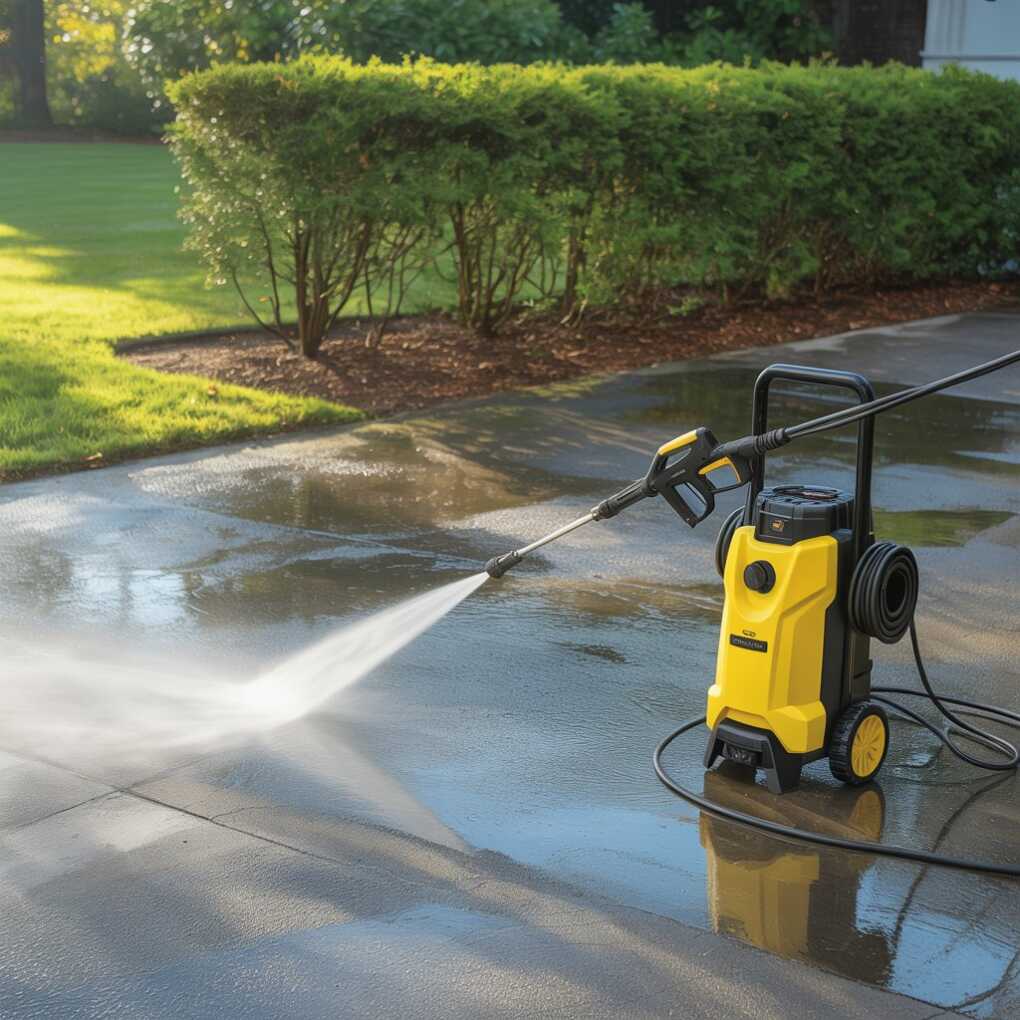Does your home’s exterior look tired? Years of dirt, green algae, oil stains, and weather can leave your driveway, deck, and sidewalk looking dull and neglected. The good news is, you don’t always need a costly replacement. Often, a thorough pressure washing is all it takes to bring these surfaces back to life. This beginner’s guide, Pressure Washing 101, will walk you through the essentials of restoring your most common outdoor surfaces, boosting your home’s curb appeal and value.

Pressure Washing vs. Soft Washing: What’s the Difference?
Pressure washing uses high-pressure water to blast away tough grime and stains, making it ideal for durable surfaces like concrete driveways and sidewalks. Soft washing, on the other hand, relies on low-pressure nozzles paired with cleaning solutions to kill mold, algae, and mildew. It’s the safer choice for more delicate areas like wooden decks or natural stone where too much force could cause damage. The key takeaway: always match the cleaning method to the surface.
Gear Up: Essential Equipment & Safety
When choosing a pressure washer, look at PSI (pressure) and GPM (flow rate). Electric models are quieter and easier to maintain, while gas-powered ones are stronger and better for larger jobs. Nozzles matter just as much. Use a wider fan angle (25° or 40°) for most projects to avoid damage, and reserve the red 0° nozzle for only the toughest spots. For large driveways, a surface cleaner attachment will save time and give you even results. Safety should always come first. Wear protective glasses, closed-toe shoes, and hearing protection. Never point the wand at yourself, others, or pets, and be mindful around outlets and fixtures.
The Pre-Cleaning Checklist: Prepare for Success
Start by inspecting the area. Look for cracks in concrete or loose boards that might worsen under pressure. Clear away furniture, toys, and debris. Pre-treat stains, especially oil spots on the driveway, with a cleaner or a simple dish soap and baking soda mix. Finally, protect your plants and landscaping by soaking them with water and covering them with a tarp before you begin.
A Surface-by-Surface Guide to Restoration
Concrete Driveways & Sidewalks: Pressure washing is best here. Start with a 25° nozzle and sweep in overlapping passes. For tougher stains, switch to a 15° nozzle, but avoid using a pinpoint spray. If you want professional-level results, consider professional concrete cleaning services.
Wooden Decks: Stick to soft washing. Apply a deck cleaner, let it sit for about 10 minutes, then rinse with low pressure using a wide nozzle. High pressure can splinter wood and shorten the deck’s life.
Composite and Pool Decks: Similar to wood, use a low-pressure wash with approved cleaners, and always check the manufacturer’s recommendations before starting.
Common Mistakes to Avoid
The number one mistake is using too much pressure, which can etch concrete and destroy wood fibers. Holding the nozzle too close can cause permanent marks within seconds. Also, be mindful of wind direction to avoid spraying windows or siding. Lastly, always rinse thoroughly once you’re done so no cleaning solution lingers on the surface.
Post-Washing Tips & Maintenance
Allow surfaces to dry for 24 to 48 hours before applying any sealant. A quality sealer on concrete or a water-repellent finish on decks helps protect against stains and weather. To extend the life of your cleaning, sweep regularly and plan for a yearly light wash.
Conclusion
With the right knowledge and equipment, pressure washing can transform your home’s exterior and restore its original appeal. Remember, start with less pressure and a wider spray pattern—it’s easier to make another pass than to repair damage. If you’re ready to tackle your own project, a rental machine and a free weekend may be all you need. But if your schedule is packed or the job feels overwhelming, reach out to Platinum Pressure Washing for expert help and let them handle the hard work.
